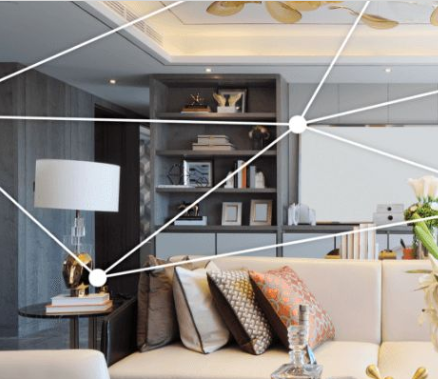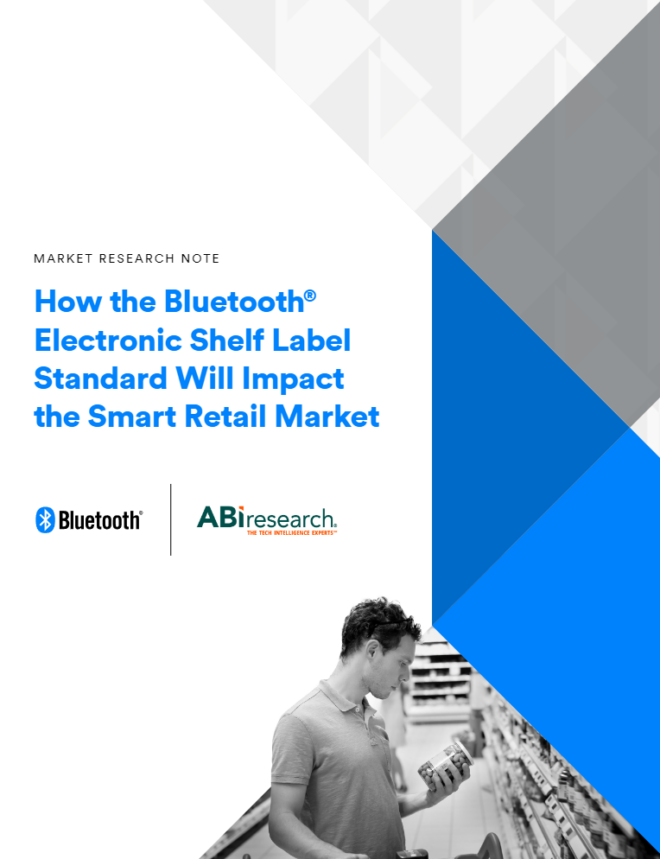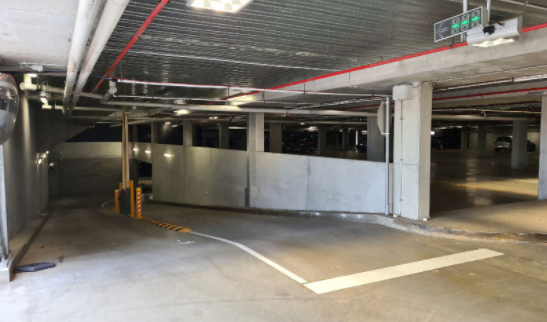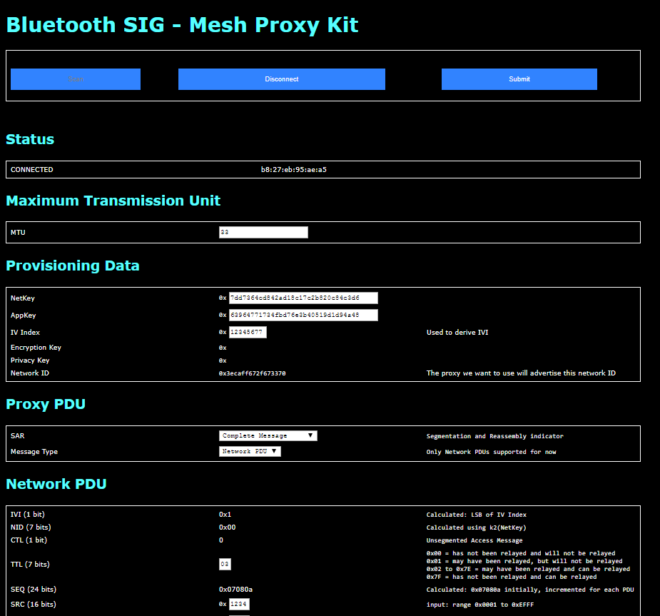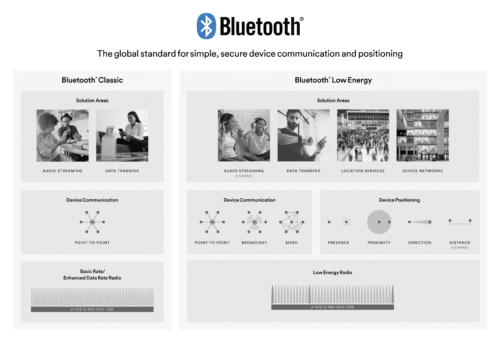Electronic shelf labels (ESL) – small, battery-powered electronic paper displays that present product and pricing information at the shelf edge – are quickly replacing paper labels. ESLs use wireless technology to communicate with a central hub to form a dynamic pricing automation network.

Until now, ESL systems have relied on proprietary protocols for wireless communication, presenting a potential barrier to global adoption. The inevitable vendor lock-in that accompanies proprietary ecosystems has prevented the ESL market from reaching its full potential.
To address this challenge, leaders from the ESL industry teamed with the Bluetooth Special Interest Group (SIG) to create a scalable, ultra-low power, highly secure ESL wireless standard based on Bluetooth® technology. “Interoperability and standardization are in the DNA of Bluetooth technology,” said Mark Powell, CEO of the Bluetooth SIG. “Our members have a long, rich history of developing standards that enable market expansion and mass adoption of new product categories.”
Standardizing the ESL Market
Establishing a true, global ESL standard gives retailers the freedom and confidence to source ESL components from multiple vendors knowing each will work with the others. Backed by a proven product qualification program, Bluetooth® ESL is the standardized solution the market has needed to minimize barriers to adoption and build a frictionless, interoperable ESL ecosystem.
“Retailers are increasingly looking towards Internet of Things (IoT) technologies to help them deliver operational efficiencies, increase conversion, and to encourage customers to return to stores,” said Andrew Zignani, research director at ABI Research. “However, some retailers have been hesitant to adopt ESL technologies due to concerns over vendor lock-in, interoperability, scalability, and the ability to extend this to other smart retail initiatives. The introduction of the Bluetooth ESL standard will help reduce potential obstacles for retailers looking to invest in IoT technologies and accelerate adoption and innovation.”
FEATURED INNOVATION
Bluetooth Electronic Shelf Labels (ESL)
With the introduction of a wireless standard for the electronic shelf label (ESL) market, Bluetooth® technology is helping unlock the next chapter in in-store digital transformation to deliver better retail outcomes for both stores and shoppers.
With the introduction of a wireless standard for the ESL market, Bluetooth® technology will help unlock the next chapter for in-store digital transformation to deliver better outcomes for stores and shoppers – automating pricing, optimizing in-store operations, and improving customer satisfaction.

- Automated Pricing: Historically, retail shelf pricing has relied on error-prone, labor-intensive paper price tags and manual processes that sometimes had to be performed several times in a typical day. ESL solutions help brick-and-mortar stores fully automate pricing strategies to display the right price at the right moment and enable seamless omnichannel retailing.
- Optimizing In-Store Operations: Manual inventory management slows operations, and undetected stockouts bite away at profits. ESLs can ease and expedite picking and fulfillment for click-and-collect shoppers while accelerating shelf stocking and replenishment to optimize product availability on shelves and avoid missed sales opportunities.
- Improved Customer Satisfaction: A shopper’s experience at the shelf edge is one of the most critical influences on a purchase decision. ESLs can provide always-accurate pricing, increased access to real-time promotions and product information, and a more gratifying omnichannel experience for customers.
Standardization at the shelf edge using Bluetooth® technology also offers benefits to ESL developers, including economies of scale and better allocation of development resources.
“We are proud to have collaborated with the Bluetooth SIG and its members to lead the standardization of ESL connectivity. Backed by a proven product qualification program and an unmatched installed base, Bluetooth® technology was the logical choice to build a frictionless, interoperable ESL ecosystem,” said Art Miller, VP of business development and head of retail at Qualcomm Technologies, Inc. “By adopting a standardized approach for wireless communications, ESL development complexity is greatly reduced, allowing development teams to turn their attention to more value-added, differentiating features and capabilities for their customers.”
Lower Costs & Faster Innovation
ABI Research predicts that more than five billion Bluetooth® enabled devices will ship in 2023 alone, and Bluetooth ESL developers will benefit from the economies of scale that Bluetooth technology affords. Increased supplier diversity leads to more attractive component pricing, driving down overall product costs. And by adopting a standardized approach for wireless communications, ESL vendors can now reallocate their engineering efforts to develop more value-added, differentiating features and capabilities.
Bluetooth® ESL products will leverage new features released in Bluetooth Core Specification Version 5.4 as well as an upcoming Electronic Shelf Label Profile Specification that defines how to use these new features to create interoperable ESL systems.
Learn more about the electronic shelf label market and the benefits of the Bluetooth ESL standard.
![]()
FEATURED RESOURCES
Bluetooth® Core Specification Version 5.4 Technical Overview
This paper details new features and updates included in Bluetooth Core Specification Version 5.4.
電子棚札(ESL)は、電池で稼働する電子ペーパー(e-paper)の小型ディスプレイです。棚の端に設置して商品名および価格情報を表示し、紙のラベルから急速に置き換わりつつあります。各ESLは無線技術を使用して中央のハブと通信し、自動的に価格表示を変更できるネットワークを形成します。

これまでESLシステムには各社独自の無線通信プロトコルを使用しており、そのことが同システムの世界的な普及への潜在的な障壁となっていました。独自のエコシステムが招くベンダーロックインは避けがたく、ESL市場がそのポテンシャルを十分に発揮することへの妨げとなってきたのです。
この課題に対処するため、ESL業界を牽引する各社とBluetooth SIGが協力し、Bluetooth技術をもとに、拡張性があり、超低消費電力かつ高セキュリティのESL無線規格を策定しました。 Bluetooth SIGのCEOであるマーク・パウエル(Mark Powell)は次のように述べています。「相互運用性と標準化は、Bluetooth技術のDNAに刻まれています。Bluetooth SIGのメンバー企業には、市場の拡大と新しい製品カテゴリーの大規模な普及を可能にする規格を開発してきた、長年にわたる豊かな実績があります」
ESL市場を標準化
真のグローバル ESL 規格の確立により、各部品と他のベンダーによる部品との互換性が確認され、小売業者は複数のベンダーからESL部品を調達する自由と安心感が得られます。実績ある製品認定プログラムに支えられたBluetooth® のESLは市場が求めていた標準化されたソリューションであり、導入に伴う障壁を最小限に抑え、あつれきがない相互運用可能な ESLエコシステムの構築を可能にします。
ABI Researchのリサーチディレクター、アンドリュー・ジニャーニ(Andrew Zignani)氏は次のように述べています。「業務効率化、購買率向上、再来店促進を実現する手段として、小売業者のIoT(モノのインターネット)技術への注目はますます高まっています。しかし、ベンダーロックインや相互運用性、拡張性、他のスマートリテールの取り組みへの拡張能力を巡る懸念から、一部の小売業者はESL技術の採用に消極的です。BluetoothによるESL規格の登場は、IoT技術への投資を検討している企業にとって障害となりうる要因を取り除き、採用と革新を加速させるでしょう」
ESL市場向けの無線規格の導入により、Bluetooth®テクノロジーは小売業におけるデジタル変革を次の段階へと導き、店舗と買い物客の双方により良い結果をもたらすことに役立ちます。

価格表示を自動化:従来、小売業における商品棚の価格表示は、ミスが発生しやすく労力を要する紙の値札と労働集約的な手作業に依存しており、時には1日数回に及ぶ作業が発生していました。ESLソリューションは、実店舗の価格戦略を完全に自動化し、適切なタイミングでの適切な価格表示を可能にします。
より効率的な業務遂行を実現:手作業による在庫管理はオペレーションを減速させ、検知を漏れた在庫切れは利益を圧迫します。ESLは、クリック&コレクトの買物客に向けた商品のピッキングと補充を合理化するとともに、商品棚の補充を迅速化して棚上の商品在庫を最適化し、販売機会の逸失を防ぎます。
買物客の満足度を向上:商品棚の前での買物客の体験は、購入の意思決定に最も重要な影響を与えるものの一つです。ESLは常に正確な価格表示と、リアルタイムのプロモーションや商品情報へのアクセスを増やし、より満足度が高く包括的なオムニチャネル体験を提供します。
Bluetooth®技術を用いたESLの標準化は、スケールメリットや開発資源の配分改善など、ESL開発者にとってもメリットをもたらします。
クアルコム・テクノロジーズの事業開発バイスプレジデント兼リテール部門責任者のアート・ミラー(Art Miller)氏は次のように述べています。「Bluetooth SIG並びにメンバー企業の皆様と協力し、ESL通信規格の標準化を主導できたことを誇りに思います。実績ある認証プログラムと比類ない普及規模を持つBluetooth®技術は、あつれきがない相互運用可能なESLエコシステムを構築するにあたり、当然の選択でした。無線通信の標準化によりESL開発の複雑さが大幅に軽減され、開発チームはお客様にとって付加価値の高い、差別化をもたらす機能や性能の開発に注力できるようになります」
コスト削減とイノベーションの促進
ABIリサーチによると、Bluetooth®対応機器の出荷は2023 年だけでも 50 億台以上と予測され、Bluetooth®ESL の開発者はBluetooth テクノロジーによるスケールメリットの恩恵を受けられます。サプライヤーの多様性が増すことで、より魅力的な部品価格が実現し、導入コスト全体が削減されます。また無線通信の標準化により、ESL ベンダーはエンジニアリングの労力を、より付加価値が高く差別化をもたらす機能や性能の開発に振り向けることが可能になります。
Bluetooth® ESL製品は、Bluetooth®コア仕様Ver. 5.4でリリースされた新機能と、これらの新機能を使用して相互運用可能なESLシステムを構築する方法を定義した次期ESL Profile仕様を活用します。
電子棚札市場とBluetooth ESL規格のメリットについて、詳しくはこちらをご覧ください。


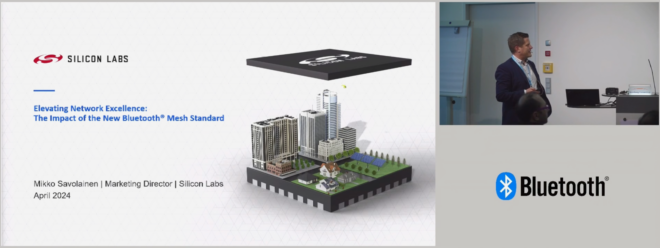



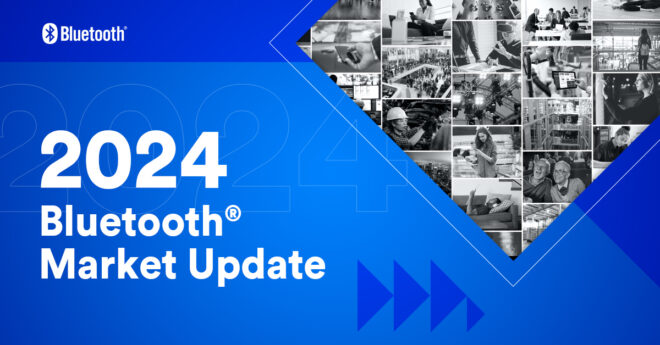

![shutterstock 1653733096[1]](https://www.bluetooth.com/wp-content/uploads/2024/03/shutterstock_16537330961-660x372.jpg)
![Periodic Advertising with Responses[1]](https://www.bluetooth.com/wp-content/uploads/2024/02/Periodic-Advertising-with-Responses1-660x345.png)


